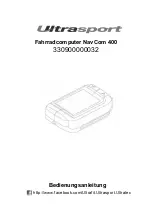
Document Conventions
Whenever the keys' captions are referenced in text, they will be shown using
UPPERCASE, e.g. ENTER.
Whenever a section's name or information displayed on screen is referenced in text, it
will be shown using
italics
, e.g.
Currency Exchange
.
Boldface
is used for emphasis.
Symbols
◄
►▲▼
(arrow keys) refer to four cursor control keys located at far right on
the key panel.
Following icons mark paragraphs dealing with:
•
step by step directions within a section
control keys
talking function
important notes.
Key Panel
The character section of the key panel emulates the American QWERTY keyboard
layout, upgraded with additional French or Polish characters marked on the keys.
The English, French and Polish character sets, as well as a numeric layout, are each
linked to their input modes, indicated in the screen’s upper right-hand corner (whenever
editing is available) by symbols
E
,
F
or
P
, respectively.
Input modes can be switched consecutively in the above sequence by pressing the
↔
key. In the main dictionary, however, the input mode selection is handled automatically
to comply with the current source language, and the
↔
key is used for changing the
translation direction.
To enter specific French letters À, Â, Ç, È, É, Ê, Ë, Î, Ï, Ô, Œ, Ù, Û and Polish
Ą
,
Ć
,
Ę
,
Ł
,
Ń
, Ó,
Ś
,
Ź
,
Ż
press and release SHIFT prior to using a corresponding letter key.
An additional symbols set is available through SHIFT+
▲
. Press
►
to see more symbols.
Press the indicated number key to insert a selected symbol.
Both the key panel and the display can be backlit by pressing the
key.
Description of Control Keys
ON/OFF
On/Off switch
DICT
Main dictionary
GRAM
English and French grammar
DIAL
Dialogs
TEL
Telephone directory
TIME
Local time




































